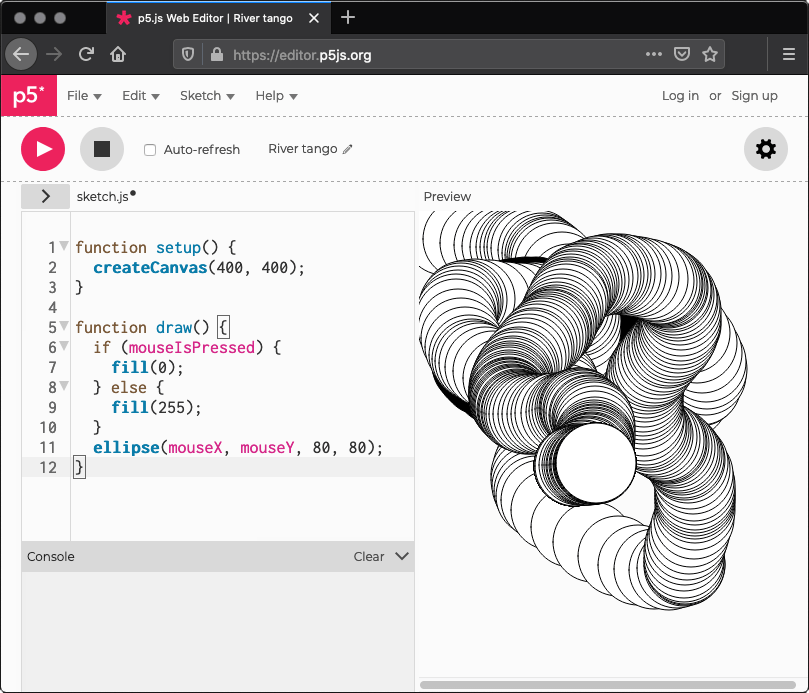Physics, Computers, and Weird Art with p5.js.
Learn how to create interactive, living, multimedia art with code and pick-up a little math and physics along the way,
(This course is chromebook compatible. Recommended Ages: 14 -18)
In this course, we’ll be learning
- How you can create new kinds of art with code
- How art and simulation are tied together
- The basics of programming in JavaScript
- A general introduction to P5, the JavaScript based version of Processing—one of the most famous and important systems for algorithmic art
To explain a little bit more about what our goals are and what we’ll be doing, I want to step back and talk about the big picture of how computers help us make art.
Making art with code, which I’m going to call algorithmic art for this rest of this class, is a relatively young practice that lets you do very different things than most traditional or digital art forms allow. While technically you could use tools like P5 to make something that looked like a traditional painting, it’d be a little unnatural to do so. Instead, what drawing with code let’s you do is make art that
- is interactive
- is different for every person who looks at it
- changes with time
- is inherently multimedia, transforming live input into new things
Moreover, people do actually still make prints of their algorithmic art—particular instances generated by it, at least—and sell that or display it alongside traditional art in galleries.
We’re using P5, specifically, because it’s easy to learn, uses one of the most popular programming languages in the world, and you can work on your projects from basically any computer because there’s an online editor.
So all of that being said, let’s start making some simple P5 programs!


